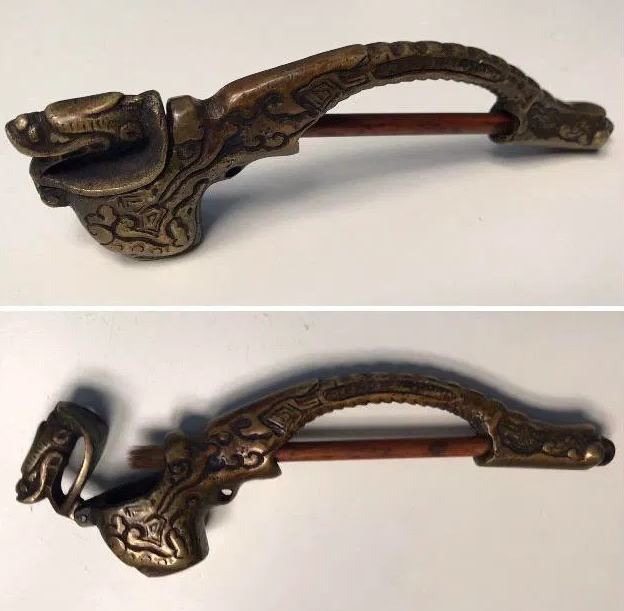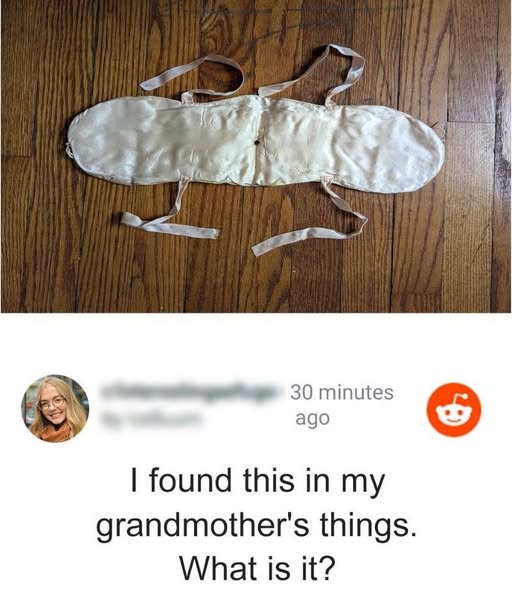There are moments when a person stumbles upon something so odd that the immediate reaction is: “What on earth is this?” The featured collection presents fourteen such items everyday objects or nearly‑everyday items that, once seen out of context, become puzzling. Each piece captures that moment of hesitation, when one must pause and question: What is this thing made for?
Strange Forms, Familiar Materials
The objects share a common trait: they look structurally odd, yet are composed of materials that seem familiar. In one instance, a stone‑like object framed by carved stone pieces; in another, a leather jacket with tiny pockets that wouldn’t make sense at first glance. The strange combinations challenge the eye. As one writer noted, discovering an item that defies easy categorisation can feel like a minor mystery.
- A stool originally used for riding a camel, later repurposed as furniture.
- An animal‑scarer device that emits a high‑pitch beep when it detects cats or other animals.
- The cap of a glitter‑powder spray bottle (mistaken for an odd tube).
- An LED light from a party balloon (wrapped in tape, looked like a battery).
- A “driveway alarm” device disguised in a small box with USB connectors.
- A locked green metal barrel affixed to a tree next to a river—actually for field data storage.
- A pocket oil‑can disguised as a hollow frying‑pan‑shaped object with a screw‑off bottom.
- A tool resembling a ruler with flexible loops—used for drawing straight lines around descenders in handwriting.
- A spoon with an odd shape designed for pouring liquid content into a toddler’s mouth.
- A prosciutto holder (metal tool) that looks like it has no clear purpose until you realise the function.
- A promotional phone‑holder shaped like a ring with three metal claws—a device from a bank giveaway.
- A device in a bathroom (with metal “shoe” shaped part) that turns out to be used to clean shoes in rainy weather by shaking off dirt.
- A flat‑track motorcycle racing “shoe” that fits over a boot—looks bizarre unless you know the sport.
- A spoon‑pendant made from a 1940 Mercury dime—appears as a heavy brass object but is actually jewellery with a hidden back‑story

The Invisible Function
Often, the key to understanding these objects lies in uncovering their hidden function. A piece that looks like a decorative item might turn out to be a tool, or vice versa. For example, something resembling a simple fabric loop on a door knob in fact served a practical purpose: to keep a door from latching while moving luggage through a hotel room .These objects reveal how design can mask purpose—and how culture and time shift what is obvious and what is obscure.
Context Is Everything
Without context, even a seemingly normal object can look bizarre. The articles emphasise how setting, culture, and history must be considered. A “metal ring with spokes” found in a basement might look mysterious—but with background it might reveal itself as part of a vintage machine or weapon sight.
Context transforms oddities into understandable tools.
The Joy of Identification
Part of the appeal of these mysterious objects lies in the detective work. Communities online, such as forums dedicated to “What is this thing?”, thrive on solving such riddles. According to one source, “a majority of things are solved within 15 minutes of posting.”The process of identifying transforms confusion into clarity and fosters a satisfying connection: someone else saw something weird, another person knew what it was.
Why We Feel Uneasy
There is also a psychological layer: when something looks familiar yet defies understanding, it triggers unease. The human brain likes patterns and recognisable functions. When an object disrupts that sense, the reaction is a mix of fascination and mild frustration. The very strangeness invites closer inspection and invites assumptions—some of which turn out to be incorrect.

What to Take Away
From the collection of fourteen bizarre objects, several lessons emerge:
- Observe before assuming. What looks strange may have a logical explanation hidden by time or design.
- Reconsider everyday items. Many ordinary objects were designed for particular eras or specific uses forgotten now.
- Context matters. Place, culture, and history unlock the meaning behind form.
- Curiosity is constructive. Asking “what is it?” is not trivial—it can open up unexpected knowledge or insight.
Conclusion
These fourteen objects serve as reminders that the familiar can become strange when displaced, and that the strange often hides a logic waiting to be discovered. The world contains countless items whose original purpose faded, yet their forms endure. By taking a moment to question, observe, and explore, one transforms confusion into understanding—and that is a small victory of curiosity over the overlooked.

















